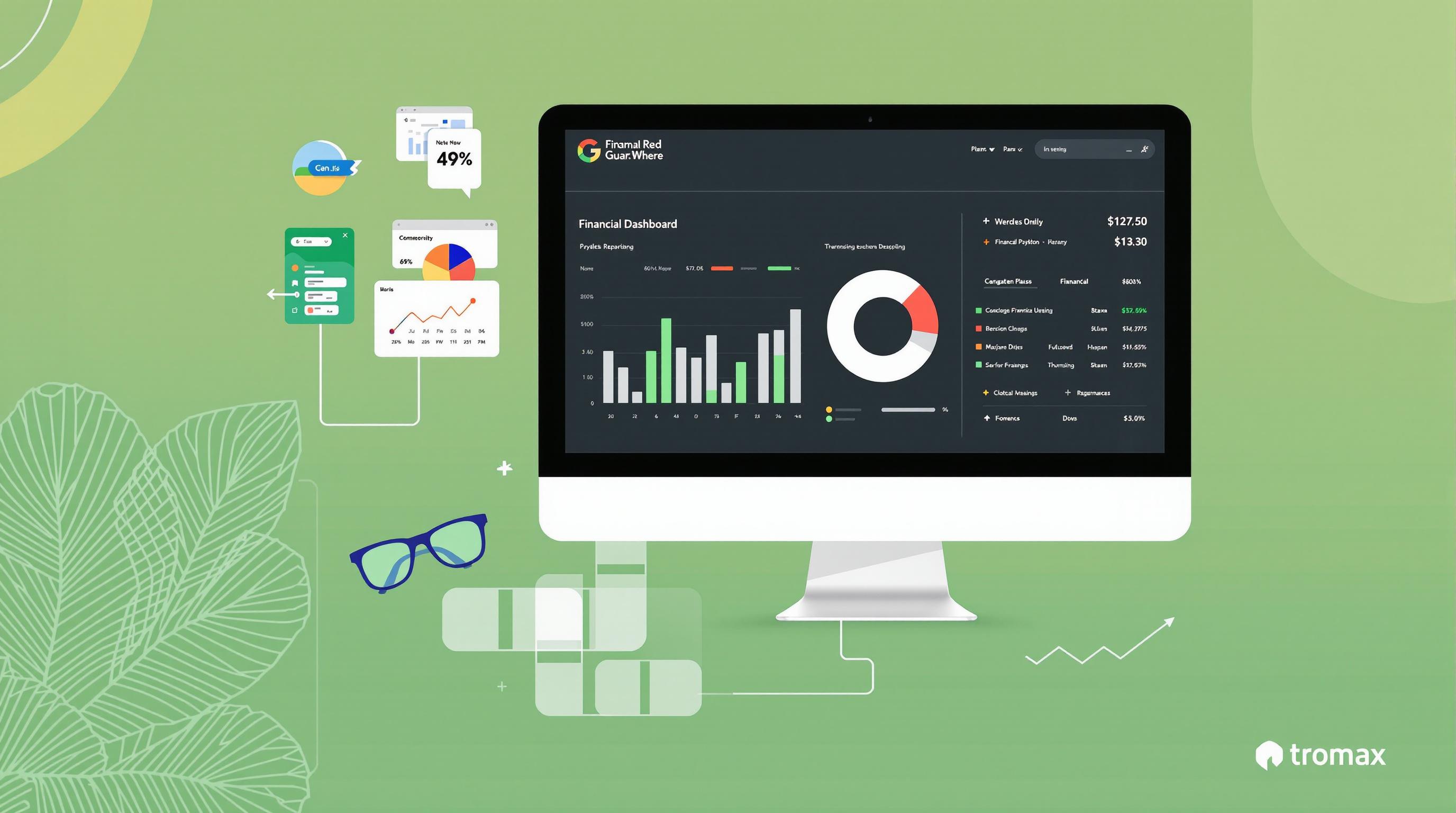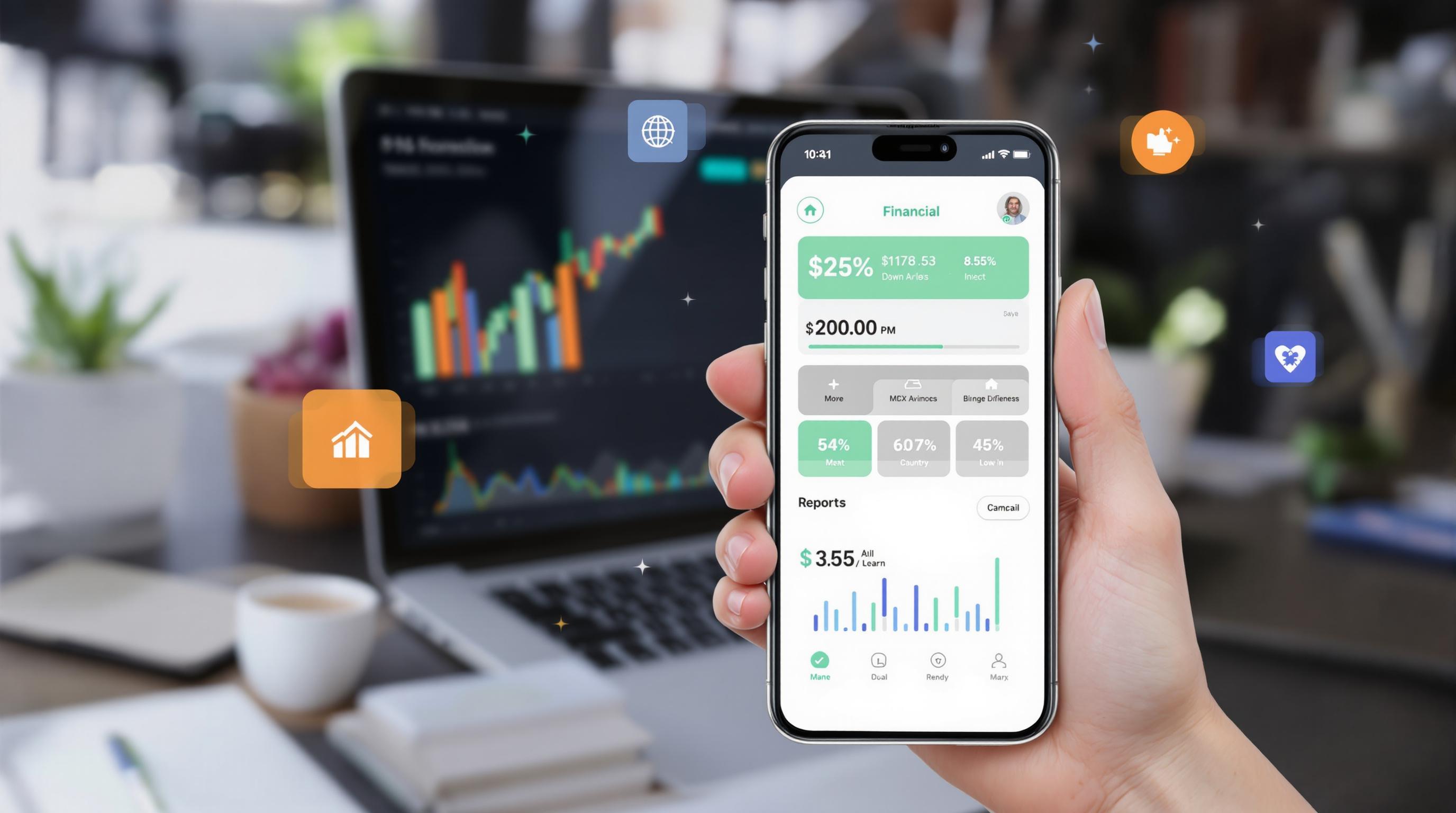Related Articles
- How Mobile Accounting Influences Entrepreneurial Mental Health and Work-Life Balance in Gig Economies
- The Quiet Costs: How Mismanaged Time Data Quietly Undermines Small Business Growth and Decision Making
- Top 5 Trailblazing AI-Powered Financial Reporting Apps Revolutionizing Accuracy and Speed Since 2019
- How Behavioral Economics Shapes Decision-Making in Financial Record Matching and Discrepancy Resolution
- How Subtle Shifts in Supplier Relationships Secretly Affect Your Company's Financial Health and Liquidity Balance
- Top 6 Payroll Solutions Born in the Last Five Years That Are Quietly Taking the Gig Economy by Storm
5 Underrated Financial Dashboard Platforms Transforming Mid-Sized Business Reporting Since 2019
5 Underrated Financial Dashboard Platforms Transforming Mid-Sized Business Reporting Since 2019
Since 2019, a wave of underrated financial dashboard platforms has quietly revolutionized how mid-sized businesses report and analyze their financial data. From user-friendly interfaces to powerful analytics, these tools are driving smarter decisions across diverse industries.
The Rise of Data Visualization in Financial Reporting
Have you ever felt overwhelmed by spreadsheets that never seem to end? Many mid-sized businesses grapple with complex financial data that’s difficult to interpret without the right tools. Enter financial dashboard platforms, which use intuitive graphics and real-time updates to make numbers speak louder than words.
According to a 2022 survey by Deloitte, companies using advanced financial dashboards reported a 38% reduction in reporting errors and a 25% improvement in decision speed.[1] Not bad for tools that often fly under the radar!
1. Databox: Turning Data into Stories
Databox may not always headline tech blogs, but its impact on mid-sized firms is profound. Founded in 2012, it gained serious traction post-2019 after rolling out enhanced integration with over 70 data sources, including QuickBooks and Salesforce.
One example: a mid-sized retail chain in Ohio used Databox to synchronize sales and inventory data, reducing stock shortages by 15% within the first quarter.
What sets Databox apart? Its conversational UI encourages users to ask questions and get instant visual feedback—making finance less “scary” for non-experts.
2. Zoho Analytics: Affordable Powerhouse for Budget-Conscious Firms
At 27 years old, I appreciate solutions that pack a punch without breaking the bank, especially for businesses eager to grow. Zoho Analytics, part of the Zoho ecosystem, offers customizable dashboards starting at just $22 per month.
Its drag-and-drop interface, combined with AI-powered insights, has helped over 15,000 mid-sized businesses streamline their financial reporting since 2019.
Take a case from a mid-sized marketing agency in Denver: Zoho Analytics helped them identify unprofitable clients by cross-referencing billing and project hours, resulting in a 12% profit margin boost.
An Old-School Fallibility Solved by Modern Tech
Remember the days of manually preparing financial reports? Tedious, error-prone, and time-consuming. A 2019 study revealed that 62% of mid-sized firms spent at least 4 days per month compiling financial data.[2] These dashboards reduce that workload significantly.
3. ClicData: For Those Who Love Customization
Customization is king, and ClicData is its diligent servant. This platform gives mid-sized businesses the tools to connect multiple data sources and craft tailored dashboards without needing a dedicated IT team.
One client, a European manufacturing company, leveraged ClicData to combine their ERP with CRM data, enabling real-time cash flow forecasting that improved liquidity management by 30%.
4. Grow.com – Growing Financial Transparency
Hey, meet Grow.com, a platform that prides itself on transforming raw data into strategic insights. Established in 2014 but hitting its stride post-2019, Grow offers a limitless data warehouse connection, perfect for mid-sized companies with diverse data streams.
According to their case studies, firms using Grow reported an average 20% improvement in cross-departmental financial collaboration.
Why These Platforms Matter for Mid-Sized Businesses
Let’s be honest: large enterprises often hog the spotlight with expensive, complex financial software. But mid-sized businesses need agility combined with deep insights without the overhead. These underrated platforms fill that gap like skilled artisans behind the scenes.
Take it from someone who’s been tracking tech since the late 80s: the real game-changers are often those that embrace simplicity while powering up capabilities.
5. Fathom: Simplifying Complex Financial Metrics
Fathom is tailored for businesses that want actionable insights without drowning in complexity. Since expanding its integrations in 2019, Fathom has helped hundreds of mid-sized firms transform raw numbers into visually-engaging reports for stakeholders.
A prominent example is a healthcare provider based in Toronto, which used Fathom to monitor patient billing and operational expenses in real-time, drastically decreasing quarterly reporting time by 40%.
Data Security and Integration: Non-Negotiable Features
One cannot discuss financial dashboards without spotlighting security and integration. All five platforms emphasize end-to-end encryption and multi-factor authentication, essential for building trust and compliance.
Mid-sized businesses often juggle multiple data formats—ERP, accounting software, CRM systems. These dashboards aim to seamlessly unify those sources, streamlining efforts and ensuring no data gets lost in translation.
The Future Outlook: AI and Predictive Analytics
Looking forward, the integration of AI-driven predictive analytics is set to redefine financial reporting dashboards. Mid-sized companies utilizing these AI-enhanced tools will likely anticipate cash flow issues and investment risks faster than ever before.
PwC predicts a 50% increase in adoption of AI-powered financial dashboards by mid-sized businesses by 2025.[3] It’s an exciting horizon!
In Conclusion: Why Look Beyond the Names You Know?
Sure, giants like Tableau and Power BI dominate headlines, but sometimes the underdogs deliver the best value for mid-sized companies. These five platforms—Databox, Zoho Analytics, ClicData, Grow.com, and Fathom—offer tailored solutions that prioritize usability, affordability, and customization.
If you’re a mid-sized business owner or financial analyst looking to level up your reporting game, it’s worth giving these underrated champions a closer look.
Sources:
[1] Deloitte, “2022 Finance Survey,” https://www2.deloitte.com
[2] Accounting Today, “Time Spent on Financial Reporting in Mid-Sized Firms,” 2019.
[3] PwC, “AI in Finance – The Future of Reporting,” 2023.




